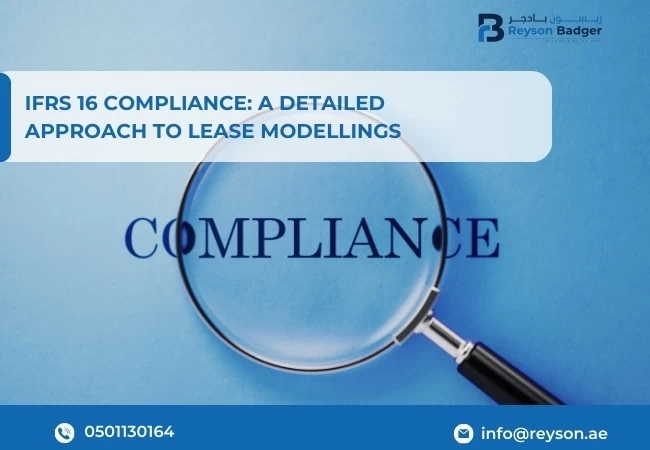IFRS 16 Compliance: A Detailed Approach to Lease Modelling

IFRS 16 is established by the International Accounting Standards Board (IASB), is a worldwide accounting standard outlining the recognition, measurement, presentation, and disclosure requirements for lease transactions in financial statements. Implemented on January 1, 2019, it replaces the previous lease guidance, IAS 17, to enhance transparency and comparability across organizations.
Before IFRS 16 compliance, businesses engaging in lease transactions did not include leased assets on their balance sheets. This practice resulted in distorted financial ratios and made it challenging to compare financial statements. The introduction of the new standard mandates lessees to acknowledge a right-of-use asset and lease liability on their balance sheets for the majority of lease agreements.
For IFRS 16 compliance, follow these steps.
- Learn the principle of IFRS 16, where a major change is how most leases are shown—now directly on the balance sheet.
- Gather all essential IFRS 16 lease documents, such as contracts, terms, payment details, options, and any other pertinent information.
- Distinguish between operating and financial leases under IFRS 16 by understanding which contracts meet the qualification criteria outlined in the standard. Identify the specific requirements that contracts must fulfil to be classified as IFRS 16 leases.
- Compute right-of-use (ROU) assets and lease liabilities for each lease in accordance with IFRS 16.
- Identify proper discount rates, typically the implicit interest rate within the lease or the lessee's incremental borrowing rate.
- Develop a model that forecasts lease payments over the lease term, incorporating adjustments for variations in amounts or dates.
- Implement the accounting principles specified in IFRS 16, covering aspects such as lease modification accounting, subsequent measurement, and initial recognition.
- Develop schedules for the gradual reduction of ROU assets and lease liabilities, ensuring an accurate representation of accounting treatment throughout the lease duration.
- Ensure that amortization schedules, estimated lease liabilities, and ROU assets seamlessly integrate with the income statement and balance sheet, providing accurate representation in financial statements.
- Comparing the IFRS 16 computation with actual transactions and sample lease agreements will ensure that they are accurate and thorough.
- Maintain transparency and auditability by extensively documenting the IFRS 16 model, encompassing assumptions, methodologies, computations, and specific considerations.
- Ensure precision and reliability by conducting comprehensive testing, which includes scenario analysis and sensitivity testing.
- Sustain ongoing compliance and precision through regular reviews and updates to the IFRS 16 model, addressing any changes in lease agreements, accounting standards, or organizational requirements.
Ensuring IFRS 16 compliance is crucial for organizations, as it enhances transparency in lease accounting practices and aligns financial reporting with international standards.
Accurately gathering lease data poses a challenge, especially for businesses with decentralized management or numerous leases. Understanding intricate lease terms and variable conditions adds complexity to the process, requiring meticulous calculations. In short, constructing a comprehensive IFRS 16 model involves overcoming several hurdles.
Implementing IFRS 16 lease accounting standards also requires meticulous attention to detail and a thorough understanding of complex lease arrangements. For IFRS 16 compliance, it is better to seek help from experts. For more information, get in touch with Reyson Badger.

